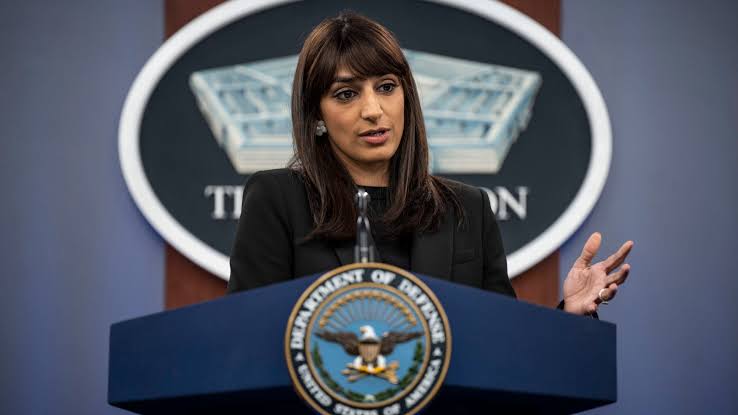Washington, DC [US]: India and the US have a great military-to-military relationship and good communication with each other, the Pentagon’s Deputy Press Secretary Sabrina Singh said in a press briefing on Tuesday (local time).
“We have a great military-to-military relationship with India, good communications. We’re going to continue to monitor what’s happening in the region, but I don’t have more to share on any updates,” she said.
Speaking about expecting a high level visit from India, Sabrina Singh said, “I don’t have any visits to read out from officials from the Indian Government. At least here at the department. I can’t speak for other officials across the interagency.”
Asked whether the Pentagon is monitoring the situation in Pakistan after the elections held on February 8, Sabrina Singh said, “Yeah, we’re certainly monitoring what’s happening there, but I’d direct you to state for more specifics on that.”
Sabrina Singh’s remarks regarding the military relations between India and Pakistan come at a time when the Chief of Army Staff, General Manoj Pande embarked on a four-day official tour to the US, starting February 13, an official statement from the Ministry of Defence said on Monday.
In a press release, the Ministry of Defence said, “During his visit, the COAS will engage in high-level discussions and interactions with General Randy George, United States Chief of Staff of the Army (CSA) and other senior military leaders.”
“Highlights of the tour include a prestigious US Army Honour Guard ceremony, a solemn laying of the wreath at the Tomb of the Unknown Soldier in Arlington National Cemetery, and a comprehensive tour of the Pentagon. These engagements symbolise the respect and mutual commitment towards global peace and security shared between the two countries,” it added.
Ideas will be exchanged on crucial topics such as the “Transformation in the Indian Army,” “Global Threat Perception,” “Transformation to Army-2030/2040,” “Human Resource Challenges,” “Future Force Development and Modernisation,” and “Co-Production and Co-Development Initiatives,” according to the press release.
These discussions are aimed at sharing insights, ideas, and best practices between the armies of India and the US.
General Manoj Pande will also visit the ‘Army Geospatial Centre’ at Fort Belvoir, the ‘National Defence University’ at Fort McNair, and hold interactions with leadership at Headquarters 1 Corps.
He will also engage with units at the forefront of military innovation and strategy, including the Stryker Unit, 1st Multi-Domain Task Force, the 1st Special Forces Group at Seattle and the Defence Innovation Unit in San Francisco.
In a press release, the Ministry of Defence said, “A visit to the California National Guard is also planned, highlighting the comprehensive nature of the visit aimed at exploring avenues for more significant training, co-development and co-production engagements.”
In a press release, the Ministry of Defence said, “This visit is another milestone in the Indo-US defence relationship, reflecting a mutual desire to enhance military collaboration, exchange strategic perspectives on global threat perceptions, and work together toward future force development and modernisation.”
“The engagements between General Manoj Pande and senior leadership of the United States Army are poised to yield substantive outcomes, fostering an environment conducive to shared security interests and defence cooperation,” it added.
Recently, US NSA General Randy George visited India for the Indo-Pacific Army Chiefs Conference (IPACC) that was jointly hosted by the Indian Army and the US Army. The conference was attended by 18 Chiefs of Armies and 12 countries represented by Heads of Delegations.
In a press release, the Ministry of Defence stated, “The Indian Army and the United States Army share a commitment to peace, democracy, and stability across regions. This tour epitomises the shared values and interests that underpin the partnership between India and the United States, aiming at a future of enhanced cooperation and mutual development in defence and security domains.”



